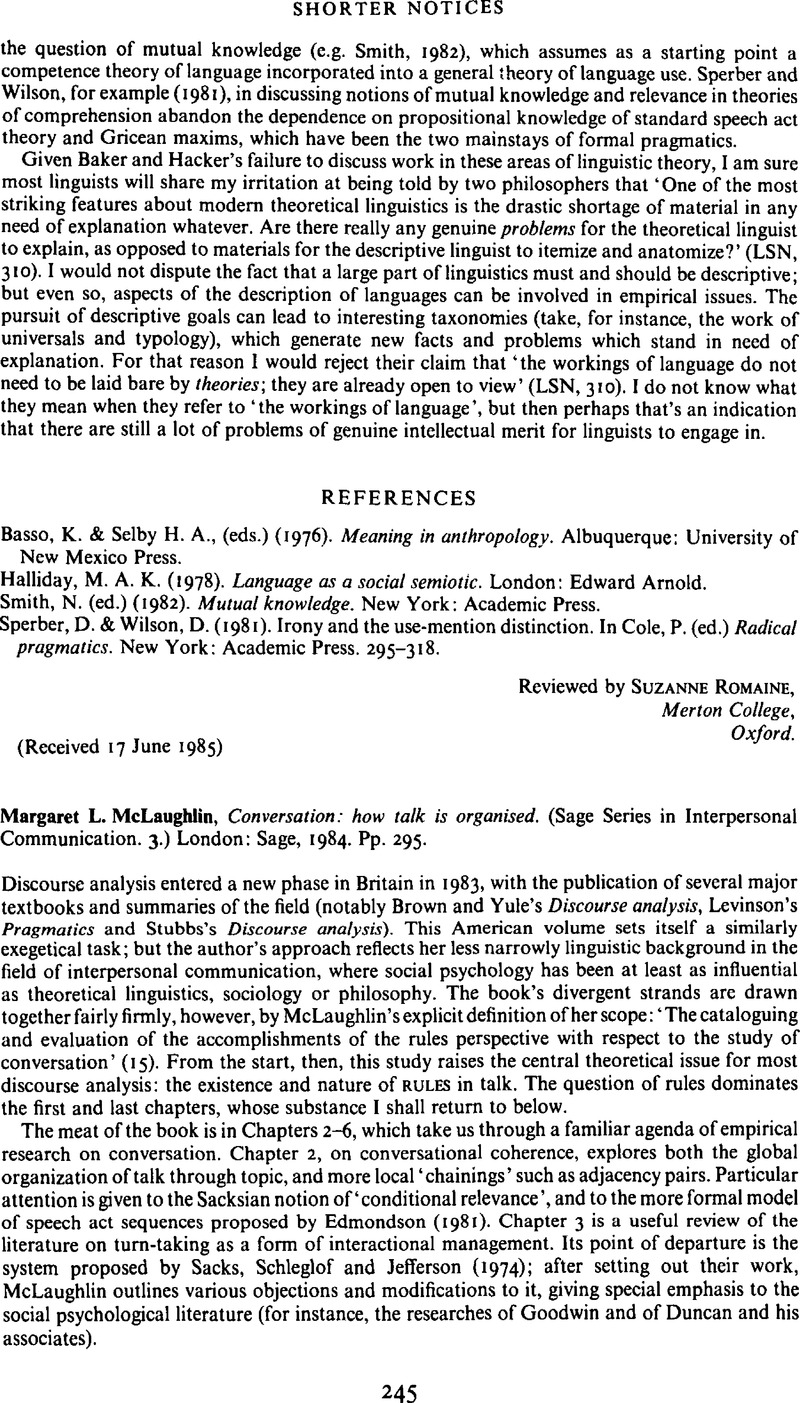No CrossRef data available.
Article contents
Margaret L. McLaughlin, Conversation: how talk is organised. (Sage Series in Interpersonal Communication. 3.) London: Sage, 1984. Pp. 295.
Review products
Margaret L. McLaughlin, Conversation: how talk is organised. (Sage Series in Interpersonal Communication. 3.) London: Sage, 1984. Pp. 295.
Published online by Cambridge University Press: 28 November 2008
Abstract
An abstract is not available for this content so a preview has been provided. Please use the Get access link above for information on how to access this content.

- Type
- Shorter Notices
- Information
- Copyright
- Copyright © Cambridge University Press 1986
References
REFERENCES
Brown, G. & Yule, G. (1983). Discourse analysis. Cambridge: Cambridge University Press.CrossRefGoogle Scholar
Harré, R. (1974). Some remarks on rule as a scientific concept. In Mischel, T. (ed.), Understanding other persons. Oxford: Blackwell.Google Scholar
Sacks, H., Schlegloff, E. & Jefferson, G. (1974). A simplest systematics for the organization of turn taking in conversation. Lg 50. 696–735.Google Scholar
Shimanoff, S. (1980). Communication rules, theory and research. Beverly Hills, Ca.: Sage.Google Scholar
Stubbs, M. (1983). Discourse analysis: the sociolinguistic analysis of natural language. Oxford: Blackwell.Google Scholar
Wilson, D. & Sperber, D. (1981). On Grice's theory of conversation. In Werth, P. (ed.), Conversation and discourse. London: Croom Helm.Google Scholar
Winch, P. (1958). The idea of a social science and its relation to philosophy. London: Routledge & Kegan Paul.Google Scholar


